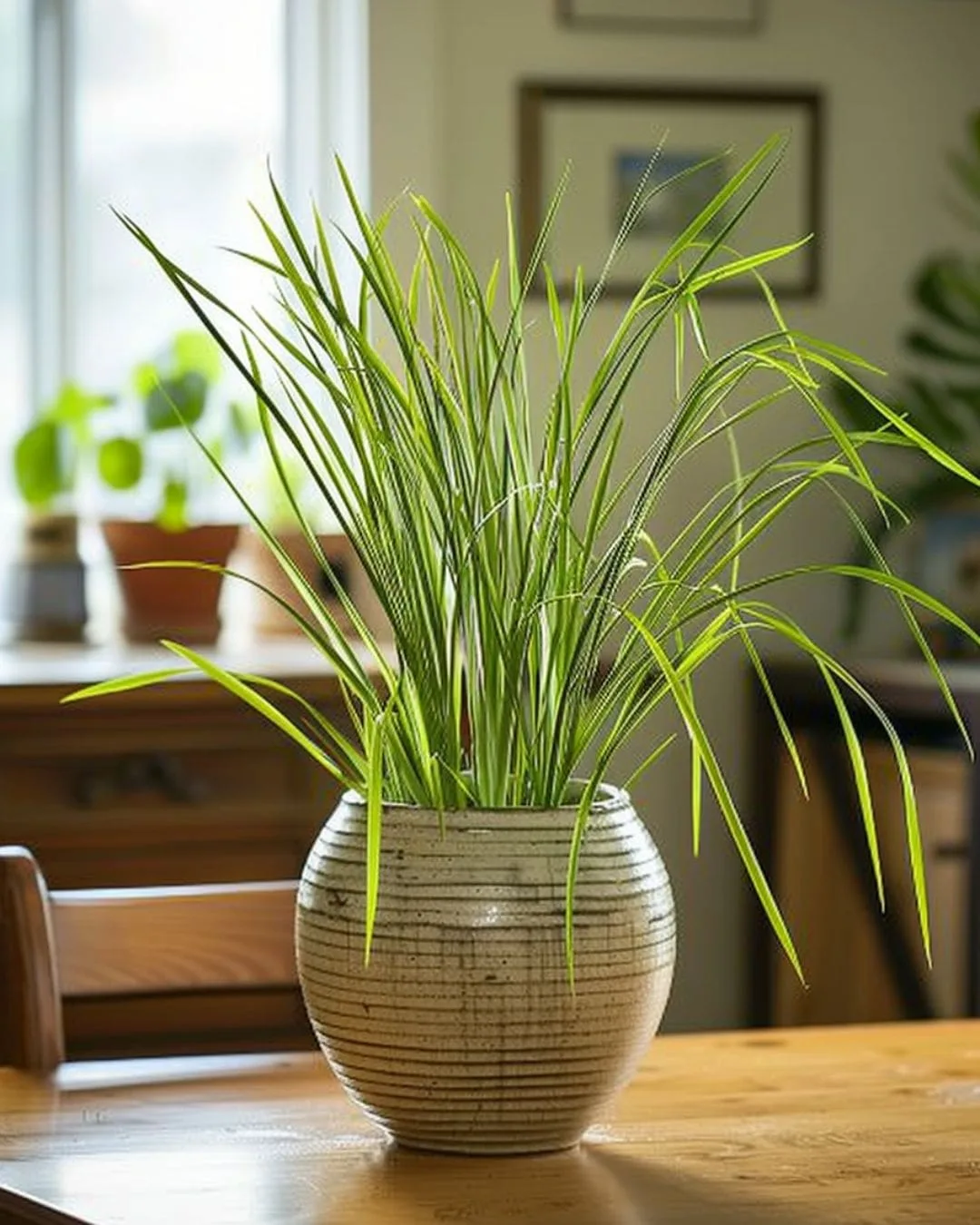If you’re craving a dash of exotic flavor right from your windowsill, growing lemongrass indoors might just be your new favorite hobby. Known for its citrusy zing, this herb adds a refreshing note to dishes, teas, and even home remedies.
What makes it even more appealing is its ability to thrive indoors, ensuring a steady supply year-round without the whims of outdoor climates.
Lemongrass isn’t just another pretty herb—it carries a host of benefits that make it worth the effort. From its reputed anti-inflammatory properties to its rich scent that doubles as a natural air freshener, growing lemongrass can enhance both your culinary creations and your living space’s ambiance.
Whether you’re seasoned in the art of herb gardening or a novice looking to add fragrance and functionality to your home, indoor lemongrass cultivation is a rewarding experience.
Choosing the Right Lemongrass Variety

Before diving in, it’s essential to select the right variety of lemongrass. The two main types are East Indian and West Indian lemongrass. While both offer delightful flavors, the West Indian variety is often favored for indoor gardening due to its adaptability and ease of growth in container environments. Its stalks are slightly thicker, which is perfect for culinary uses.
Once you’ve decided on your variety, you can source your lemongrass from either a garden center or the produce section of your local grocery store. Yes, those fresh stalks can be potted and coaxed into vibrant growth. Just make sure they have some of the root base intact for the best start.
Setting Up the Ideal Growing Environment

Lemongrass thrives on light and warmth, so placing it in the right spot is crucial. Position it near a sunny window where it can bask in at least six hours of sunlight daily. If natural light is limited, a grow light can be a reliable ally to mimic the sun’s nurturing rays.
Temperature-wise, this herb prefers conditions reminiscent of a pleasant tropical day—around 70-80°F. It’s not too fussy about humidity, but a little extra moisture in the air won’t hurt, especially during dry winter months. Use a humidifier if needed or simply mist the plants occasionally.
Planting Lemongrass Indoors

To start your indoor lemongrass garden, you’ll need a pot with good drainage, potting soil, and your chosen lemongrass stalks. Fill the pot with soil, plant the stalk about an inch deep, and water it generously.
One of the advantages of growing lemongrass in pots is the ability to control the environment easily. Ensure the pot is large enough to accommodate growth—a 12-inch pot should suffice for a small clump. Over time, the plant will develop a root ball that takes up most of the pot, so repotting every year or two is advisable.
Caring for Your Indoor Lemongrass

Proper care is key to flourishing lemongrass. Water it regularly but don’t let it sit in waterlogged soil as this can lead to root rot. Allow the top inch of soil to dry out slightly between waterings.
Feeding your lemongrass with a balanced liquid fertilizer every month can boost its growth. However, be cautious not to over-fertilize, as this might harm the plant. Trim the leaves occasionally to encourage bushing out and remove any dead stalks to keep the plant healthy.
Harvesting and Using Lemongrass

Harvesting lemongrass is a straightforward process. Once the plant has developed enough foliage, typically after a few months, you can start to cut the stalks. Aim for stalks that are about half an inch thick at the base. Use a sharp knife or scissors to cut them just above the soil line.
Once harvested, lemongrass can be used fresh or stored. It can be refrigerated in a plastic bag for up to two weeks or frozen for longer storage. Remember, the base of the stalk is where the most intense flavor resides, so don’t discard it!
Final Insights
Growing lemongrass indoors not only spices up your cooking but also enhances your living space with a touch of the exotic.
With the right environment and care, your indoor garden can produce a flavorful crop year-round. So why not give it a go and bring a little slice of tropical paradise to your home?
Embrace the process, and don’t be afraid to experiment in the kitchen with your harvest. Your taste buds—and your senses—will thank you.

